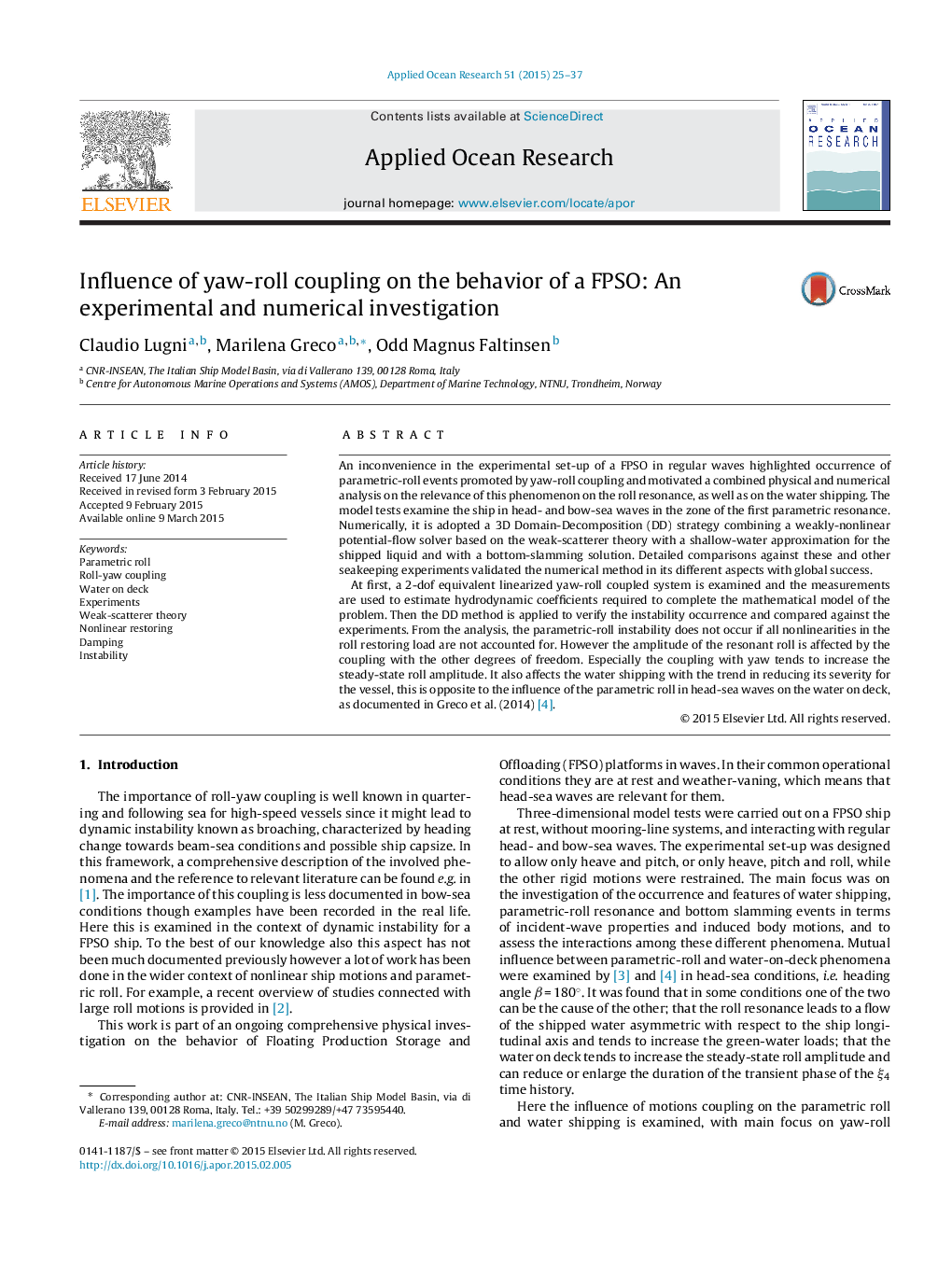| Article ID | Journal | Published Year | Pages | File Type |
|---|---|---|---|---|
| 1719968 | Applied Ocean Research | 2015 | 13 Pages |
•A combined experimental-numerical investigation was done on the parametric roll and water on deck occurrence in regular waves close to head sea for a FPSO.•The method is a Domain-Decomposition coupling a weak-scatterer seakeeping solver, a shallow-water theory for shipped water and a bottom-slamming solution.•The analysis focuses on the role of yaw-roll coupling on the occurrence and features of parametric resonance and water on deck phenomena.•Concerning the parametric roll, this coupling promotes instability and can modify the roll natural frequency.
An inconvenience in the experimental set-up of a FPSO in regular waves highlighted occurrence of parametric-roll events promoted by yaw-roll coupling and motivated a combined physical and numerical analysis on the relevance of this phenomenon on the roll resonance, as well as on the water shipping. The model tests examine the ship in head- and bow-sea waves in the zone of the first parametric resonance. Numerically, it is adopted a 3D Domain-Decomposition (DD) strategy combining a weakly-nonlinear potential-flow solver based on the weak-scatterer theory with a shallow-water approximation for the shipped liquid and with a bottom-slamming solution. Detailed comparisons against these and other seakeeping experiments validated the numerical method in its different aspects with global success.At first, a 2-dof equivalent linearized yaw-roll coupled system is examined and the measurements are used to estimate hydrodynamic coefficients required to complete the mathematical model of the problem. Then the DD method is applied to verify the instability occurrence and compared against the experiments. From the analysis, the parametric-roll instability does not occur if all nonlinearities in the roll restoring load are not accounted for. However the amplitude of the resonant roll is affected by the coupling with the other degrees of freedom. Especially the coupling with yaw tends to increase the steady-state roll amplitude. It also affects the water shipping with the trend in reducing its severity for the vessel, this is opposite to the influence of the parametric roll in head-sea waves on the water on deck, as documented in Greco et al. (2014) [4].
